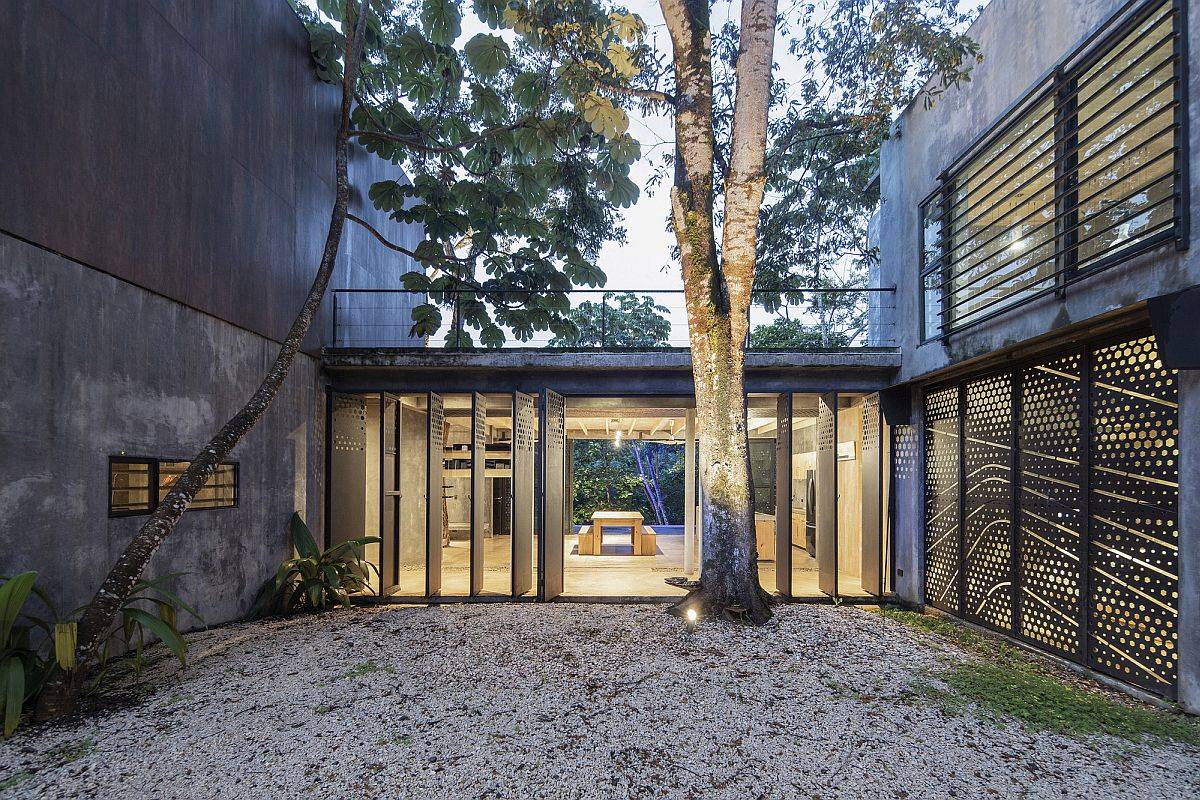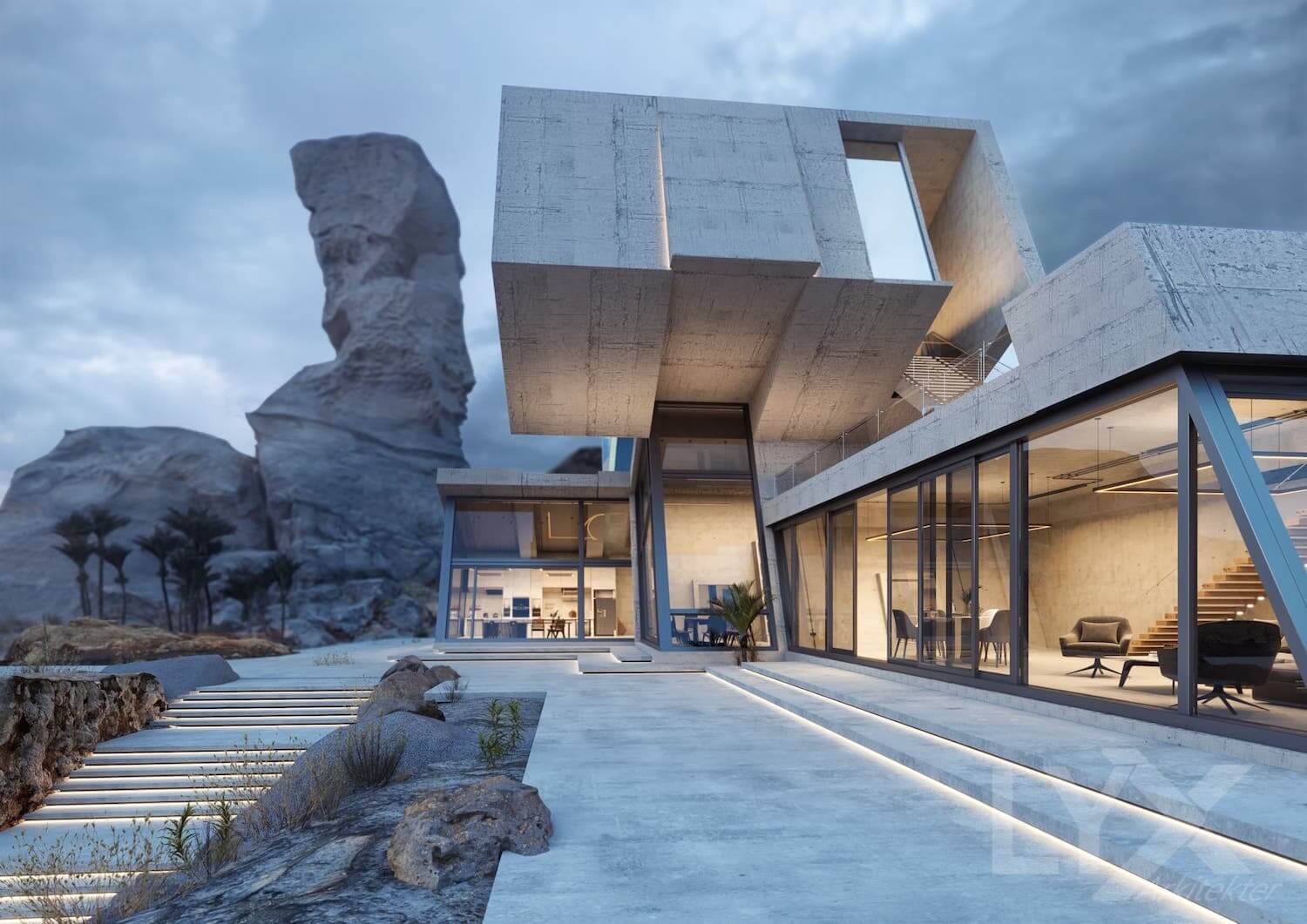Sacred Modernity showcases "unique beauty" of brutalist churches
Table Of Content

The brutalist style is worth your attention if you’re looking for something big and bold for your next redesign. Because many themes cross over between modern contemporary, industrial, and brutalist, it’s easy to blend the three together if you want to pull several different elements into a room. With its raw and industrial aesthetics, brutalism is now embraced by designers and homeowners alike as a bold statement in interior design. Pieces are often made from raw materials like concrete or wood, adding to the space's overall industrial feel. Originating from the French term “béton brut” meaning “raw concrete”, Brutalist architecture was popularized by architects such as Le Corbusier, Louis Kahn, and Paul Rudolph who believed in creating functional spaces with minimal ornamentation. Minimal decoration is a defining feature of brutalist design, emphasizing the intrinsic beauty of materials and form over unnecessary embellishments.
Industrial Lighting
With it, he hoped to encapsulate the newly emerging architectural style borne of post-Modernism and (at least in Britain) the post-World-War-II years. Unlike other styles that often incorporate artificial or mass-produced materials, Brutalist interiors use natural materials such as concrete, steel, and wood. The use of raw materials such as concrete, steel, and glass not only creates a unique aesthetic but also reduces the carbon footprint of a building. At its core, brutalism’s rawness creates meditative sanctuaries ideally grounded against chaotic modernity.
Inside One Family's Chic Brutalist-Style Tribeca Triplex - Architectural Digest
Inside One Family's Chic Brutalist-Style Tribeca Triplex.
Posted: Mon, 16 Oct 2023 07:00:00 GMT [source]
The Key Brutalist Artisans
Founded by Lamia Maalouf, MI Design is an award-winning, detail-oriented, and professional design firm. Its mission is to provide personal attention while offering a high level of design that adheres to the client’s aesthetic and budgetary goals. By 2 a.m., the crowds at Milan Design Week mainstay Bar Basso spill into the street, negronis sweating in their hands, trying to remember what they saw that day and what they want to see tomorrow. "We implemented subtle details that nod to the building's heritage, such as carved niches recessed into the walls and cradling light fixtures alongside crafted arches, bows, and pitches, reminiscent of this period of sacral architecture." Many of these materials are reclaimed, including wooden floorboards and terracotta tiles, sourced from local construction sites and reclamation yards.
Carrie Livingston Design
Their clean, timeless, and classic style is also reflected in their store located in the heart of Manhattan Beach. In California, this resurgence has been evident in the restoration of many Brutalist buildings, such as the Salk Institute and City Hall. Which have been updated with modern amenities while retaining their original architectural integrity. Whether you love it or hate it, Brutalist design has made lasting marks across the country. Others stroll through college campuses on their way to class with fortress-like concrete structures defending the sanctity of learning along the way. A few of us like to embrace the style full force in our homes, lounging in cavernous living rooms to binge our favorite reality show.
Blending traditional techniques with modern technology, our family-practice integrates culture, trends, and research to profoundly capture your essence. A city of electric architectural diversity – Belgrade’s Modernist structures give the Serbian capital a unique character. The grey of Belgrade’s Brutalist concrete is one of the city’s architectural signatures, existing in both complex volumetric facades and monolithic rectilinear forms. Since Brutalist design strips away any superfluous ornamentation, interiors rely on textures to achieve an interesting and layered look. As a result, rough concrete, reflective glass, and even exposed piping become art forms in their own right, creating impactful visual interest with the most basic building materials. The use of raw materials such as concrete walls or floors, exposed pipes or beams, unpainted surfaces, and rough textures are all characteristic elements of this style.
Sent every Tuesday and containing a selection of the most important news highlights. Sent every Thursday and featuring a selection of the best reader comments and most talked-about stories. "I would say with this property we were a bit more colourful than usual, and I think part of that is acting in contrast to the brutalist building that the hotel's in," explained Hausman.
Barn-like house

'Allowing a little natural patina and warmth to the metals ensures everything felt cohesive,' says Lane. Inside the low-slung buildings, mid-century modern-style furniture nods to the home's architectural references but the interior is brought up-to-date with the addition of modern art. “Growing up on a farm in central Montana taught me a lot about hard work,” Terri says. She left the farm to earn a degree in interior design at Montana State University-Bozeman, then headed for Los Angeles and warmer climes.
The fundamental characteristics that define the elusive grey-themed spaces are strong sculptural elements with bulky and unfinished, stark and monolithic expressions. “We preserved a lot of the material’s visible marks of making, which suggest a history and a bit of mystery. “We preferred texture, roughness, depth.” The design of the store was met with immediate acclaim, receiving several glossy articles in the fashion press (and—an honor for any New Yorker—a fawning Instagram post from Keith McNally). McGregor Smith also described that modernist and brutalist churches exhibited a move away from traditional forms of religious symbolism in decorative elements, and instead used the material and shape of the building to recall the same feelings. Claudia Afshar Design is a specialist high-end interior design company with a transnational footprint. Apprenticing at her Mother’s award-winning interior design firm and learning from her Father’s large-scale property business leads to Claudia’s sophisticated, sumptuous, and refreshingly unique approach.
Skinny Japanese house
“The style is characterized by raw, exposed concrete and bold geometric forms,” Mark Bittoni, principal of Bittoni Architects says. In this guide from AD, discover the history and impact of Brutalism, study the controversial reactions to the look, and visit famous Brutalist buildings around the world. Brutalist Interior Design originated as an architectural movement in the 1950s, gaining popularity in the 1960s and 1970s. It was a response to the sleek and decorative styles that dominated the mid-century period. Architects and designers began to experiment with exposing the structural elements of buildings, showcasing the beauty of raw concrete, steel, and other industrial materials.
Minimal ornamentation is a consistent theme, aligning with the design's ethos of simplicity and reliance on the inherent beauty of materials. Brutalist Interior Design is a bold and distinctive style that emerged in the mid-20th century. It is characterized by its use of raw, exposed materials, monolithic forms, and a focus on functionality. The name “Brutalist” derives from the French term “béton brut,” which translates to “raw concrete.” This design style embraces the rough and unfinished aesthetic, celebrating the essence of materials in their purest form.
RentCafe’s Biggest Design Styles for 2024 Include Brutalism - Apartment Therapy
RentCafe’s Biggest Design Styles for 2024 Include Brutalism.
Posted: Sat, 03 Feb 2024 08:00:00 GMT [source]
It represents a method of using concrete to showcase the patterns imprinted on it by its formwork. Philosophically, it also signifies the act of showcasing the truth or true nature of architectural elements within a space. Fusing green plants and natural foliage within a brutalist space, it creates a soulful ambiance amidst the otherwise gritty atmosphere. In contrast to the harsh concrete, greenery elevates the interior environment by generating visual interest and also celebrating life within austere forms. Previously executive editor of Ideal Home, she’s specialized in interiors, property and gardens for over 20 years, and covers interior design, house design, gardens, and cleaning and organizing a home for H&G. It’s no big surprise that she likes to put what she writes about into practice, and is a serial house renovator.
With its massive concrete forms, soaring columns, and expansive public spaces, the City Hall is a testament to the power of Brutalism and its ability to create buildings that are both grand and austere. Patina is the thin layer which develops on materials (particularly metals and stone) as a result of oxidisation and ageing over time. Patinated finishes give Brutalist interior designs a less refined, textural and industrial feel.
Studio Okami Architecten stripped the walls of this flat in Antwerp's Riverside Tower to let its original structure take centre stage.
Negative space and raw textures soothe mental overload and decompress overstimulation from constant notifications and virtual inputs. Of all interior design styles that are present today, thoughtful brutalism provides space to process and breathe in your home environment. While bare concrete might be less prevalent, other design elements like patchwork metal continue to echo the bold aesthetic of brutalist design. As we approach 2024, the landscape of interior design is poised for a potential revival of brutalist style, reflecting society's evolving tastes and needs. Unlike traditional design styles that strive for polished perfection, Brutalist design celebrates imperfections, finding beauty in raw and unfinished surfaces. Integrate raw surfaces into your design by leaving concrete or brick walls unfinished.
Adding textured rugs, throw pillows, or wall coverings can also bring depth and variety to the space. While Brutalist design tends to lean towards neutral tones, pops of bold, contrasting colours are often used to create visual interest and focal points within the overall muted palette. Infuse bold colours through accent furniture, vibrant artwork, or colourful textiles like cushions and rugs.
Biodegradable stools and a dining table that discretely turns into a desk are among Dezeen editor-at-large Amy Frearson's picks of the most progressive furniture launches at this year's Milan design week. "Here the concept of incarnation is integrated through the abstraction of organic forms and geometry as a sacred message. The omnipresent roof structure serves as a conduit, forging a connection between the celestial and physical realms. "Although narrow, the shuttered windows create depth and volume providing a calming soft light that hints at the vastness of space beyond its walls." "This departure from traditional symbolism shifted creative expression away from supernatural narratives of heaven and hell, embracing instead earthly qualities of materiality," McGregor Smith added. He explained that while early modernist churches adopted familiar rectangular or cross shapes, they quickly evolved to incorporate different geometries such as squares, circles and octagons.
Comments
Post a Comment